Helping Monarch Butterflies at Home
Many of you know that the Houston Zoo staff works on many conservation projects in the field. Our staff travels to Africa, Panama, Galapagos Islands and more to help save animals in the wild. Recently, two of our staff members, Rodney Honerkamp and I, went on a different kind of conservation trip. A monarch conservation visit right in our area!
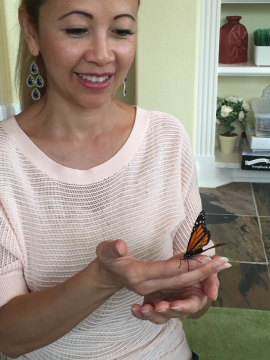
We were privileged to go to the home of Houston Zoo Asante Society members, Ron and Demi Rand in Pearland. Demi raises and rescues monarch butterflies and has all stages of their life cycle from egg to adult. A lot of her time is spent tending to the many plants in her gardens that feed the butterflies and bees that visit her yard. Her gardens have two types of milkweed, among other pollinator host plants, and have attracted at least six different types of butterflies, multiple species of bees and even moths at night.
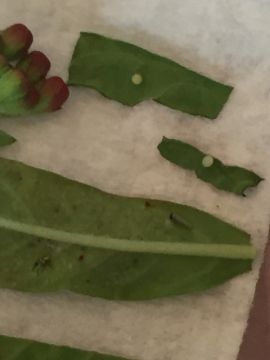
Why is the work Demi does for monarchs so important? Butterflies, along with bees,
bats and other animals, are pollinators. A huge percentage of all the food we eat, the cotton used to make our clothes, even coffee and chocolate rely on pollinators. Without pollinators we would lose all those things and more. This year alone Demi has tagged and released over 1,000 butterflies. The tags are
a small sticker placed on the wing and the information on the sticker is sent to Monarch Watch.
Recently, Houston Zoo staff and volunteers took part in field work on grounds tagging monarchs. They tagged 23 monarchs this season! That means there are 23 more monarchs that can be tracked on their 3,000 mile migration to Mexico.
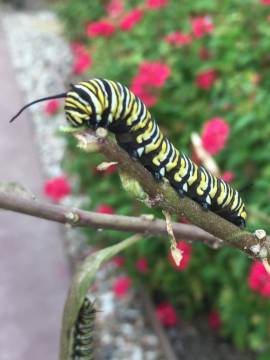
Monarch Watch is a non-profit, education, conservation and research program based at the University of Kansas. They have information on tagging monarchs along with biology and rearing. They provide information about gardening for monarchs and conduct research projects on things like larval monitoring and monarch flight vectors.
There are several other resources you can use to learn more. In addition to Monarch Watch, check out TVbutterfly.org to learn about a monarch way station that one of Demi’s “Monarch Sisters”, Dr. Amy Harkins has built at the Tuscany Village Skilled Nursing and Rehabilitation in Pearland, TX. Monarch Gateway monarchgateway.org and the International Butterfly Breeders Association butterflybreeders.org are also great sites.
Facebook has some groups dedicated to monarchs also like the group The Beautiful Monarch.
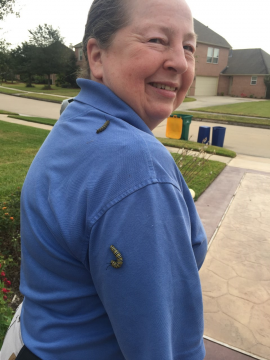
The day we went to visit Demi and Ron, we were able to watch as 11 Monarchs were tagged and released. This was the reward after weeks of hard work for Demi. She collects eggs she finds on her milkweed and rinses them in a 5% bleach solution to combat the OE parasite (Ophryocystis elektroscirrha) that has been attacking monarchs. This parasite does the most damage in the pupal stage.
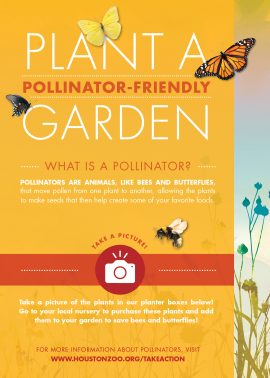
The affected butterflies can have difficulty emerging or fall to the ground before they fully expand their wings. It takes 4-5 days for the eggs to hatch and then she needs to be sure the caterpillars have plenty of milkweed to eat. The caterpillars will eat voraciously for 2 to 3 weeks then they will pupate into their chrysalis. Demi monitors the chrysalis closely over the 7 to 10 days it takes for the butterfly to emerge. Once they emerge they live in a protected enclosure until they are dry and their wings are fully stretched out. At that point she is able to tag them and release them. If any emerge with issues that prevent them from flying, she has a special enclosure for those butterflies so they will have nectar readily available.
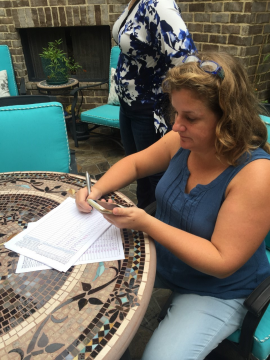
How can you help? Plant your own pollinator garden! You can even work towards having it registered with Monarch Watch as a monarch way station. It will be a place for the migrating monarchs to stop and refuel on their journey south. If you don’t know what to plant, just stop by our conservation stage at the zoo. It is to your right as you come in. You will find signage about native plants to attract butterflies. Simply take a picture of the sign and take it with you to the nursery where you buy your plants.
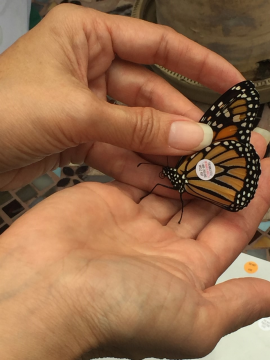
You can also get involved at the Houston Zoo. Take a picture of your pollinator garden at home and bring the pictures to the Naturally Wild Swap Shop. You will be registered as a Pollinator Pal and receive points to spend in the shop. Also, be on the lookout for pollinators on zoo grounds. If you get a picture of a pollinator on grounds you can also bring that to the Swap Shop for points and be registered as a
Pollinator Pal. Show the Naturalist in the shop the picture and tell them which of the zoo’s gardens you saw it in. Don’t know about the Naturally Wild Swap Shop? Click here for more information.
